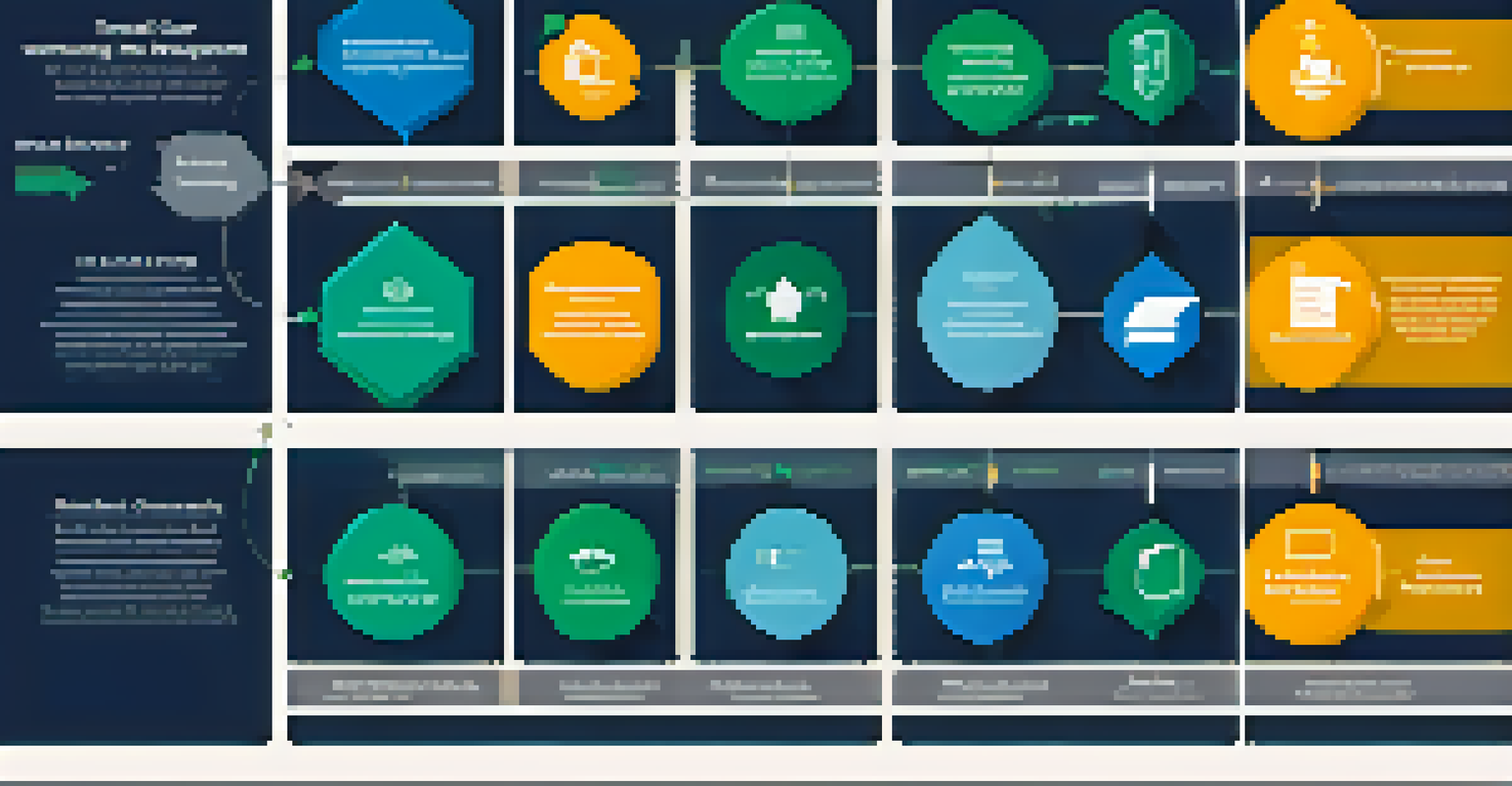Barriers to Implementing Chronic Care Models in Healthcare

Understanding Chronic Care Models in Healthcare
Chronic care models (CCMs) are designed to improve care for patients with chronic illnesses by promoting proactive management and coordination. These models emphasize a patient-centered approach that involves regular monitoring, education, and support. Implementing CCMs can enhance patient outcomes, but understanding their intricacies is crucial for healthcare providers.
The greatest medicine of all is to teach people how not to need it.
At their core, CCMs focus on long-term relationships between patients and healthcare teams, aiming to empower patients in managing their health. For instance, a diabetes management program might include regular check-ins and educational resources to help patients make informed decisions. However, the transition from traditional care approaches to CCMs can be complex and challenging.
Recognizing the benefits of CCMs is the first step, but successfully integrating them into existing healthcare systems requires careful planning and commitment. As healthcare continues to evolve, understanding the barriers to implementing these models becomes essential for improving chronic care delivery.
Financial Constraints Impacting Implementation
One significant barrier to implementing chronic care models is the financial constraints faced by healthcare organizations. Many providers struggle with limited budgets, making it challenging to allocate resources for training and infrastructure needed for CCMs. This lack of funding often results in inadequate support systems for both patients and providers.

Moreover, reimbursement structures in healthcare can create disincentives for adopting CCMs. Traditional fee-for-service models prioritize volume over value, which may discourage providers from investing in the time and resources necessary for chronic care management. As a result, healthcare systems may hesitate to shift towards models that enhance patient care but require upfront investment.
Financial Barriers to CCM Adoption
Many healthcare organizations struggle with limited budgets and reimbursement structures that hinder the implementation of chronic care models.
Addressing financial barriers is crucial for the successful implementation of CCMs. This could involve advocating for policy changes that support value-based care and providing incentives for healthcare organizations that invest in chronic care management initiatives.
Lack of Training and Resources for Healthcare Providers
Another barrier to the successful implementation of chronic care models is the lack of training and resources available to healthcare providers. Many professionals may not be familiar with the principles of CCMs, leading to uncertainty and resistance to change. Without proper training, providers may struggle to adopt new practices, which can hinder the overall effectiveness of chronic care programs.
An ounce of prevention is worth a pound of cure.
Training healthcare providers in chronic care management techniques is essential for fostering a culture of proactive patient care. For instance, equipping staff with the skills to engage patients in shared decision-making can significantly enhance the patient experience. However, many organizations may find it challenging to allocate time and resources for comprehensive training programs.
Investing in ongoing education and support for healthcare providers can help bridge this gap. By fostering a well-informed workforce, organizations can ensure a smoother transition to CCMs and ultimately improve patient outcomes.
Patient Engagement Challenges in Chronic Care Models
Patient engagement is a cornerstone of effective chronic care models, yet it remains a significant challenge. Many patients with chronic conditions may feel overwhelmed or apathetic about managing their health, leading to low participation in care programs. This lack of engagement can directly impact the success of CCMs, as active participation is crucial for achieving desired health outcomes.
To foster patient engagement, healthcare providers must create supportive environments that encourage patients to take an active role in their care. This can include utilizing technology, such as patient portals or mobile apps, to facilitate communication and provide access to educational resources. However, not all patients may be comfortable with or have access to such technologies, creating further barriers.
Need for Provider Training
Lack of training and resources for healthcare providers can lead to resistance in adopting chronic care management practices.
Addressing these engagement challenges requires a tailored approach that considers individual patient needs and preferences. By building strong relationships and offering personalized support, healthcare providers can help empower patients to become more involved in their chronic care management.
Cultural and Socioeconomic Factors Influencing Care
Cultural and socioeconomic factors play a crucial role in the implementation of chronic care models. Patients from diverse backgrounds may have different beliefs about health and healthcare, which can affect their willingness to engage in chronic care management. Understanding these cultural nuances is essential for designing effective care programs that resonate with patients.
Additionally, socioeconomic status can greatly influence a patient's access to healthcare resources. For example, individuals with lower income may struggle to afford medications or regular check-ups, making it difficult for them to participate fully in chronic care models. These disparities can hinder the overall effectiveness of CCMs and exacerbate health inequities.
Healthcare organizations must take these factors into account when designing chronic care programs. By incorporating culturally competent practices and addressing socioeconomic barriers, providers can create more inclusive care models that better serve diverse patient populations.
Interdisciplinary Collaboration as a Barrier
Interdisciplinary collaboration is vital for the success of chronic care models, yet it often faces obstacles in healthcare settings. Many healthcare providers work in silos, focusing solely on their areas of expertise without effective communication with other team members. This lack of collaboration can lead to fragmented care, undermining the goals of chronic care management.
When healthcare professionals from different disciplines come together, they can provide more comprehensive care for patients with chronic conditions. For instance, a chronic pain management team might include doctors, physical therapists, and mental health professionals, all working collaboratively to support the patient's needs. However, establishing effective communication channels and fostering teamwork can be challenging, particularly in larger healthcare organizations.
Patient Engagement Challenges
Effective patient engagement is critical for chronic care models, yet many patients feel overwhelmed and may lack the necessary support to participate actively.
To overcome this barrier, healthcare leaders must prioritize collaboration and create structures that facilitate teamwork. By promoting a culture of shared responsibility and open communication, organizations can enhance the effectiveness of chronic care models and improve patient outcomes.
Technology Limitations Hindering Model Adoption
While technology holds great promise for enhancing chronic care management, limitations can hinder its adoption. Many healthcare organizations lack the necessary infrastructure to implement advanced data management systems that support CCMs. This can lead to difficulties in tracking patient progress and coordinating care effectively.
Moreover, the rapid pace of technological change can create challenges for providers trying to keep up. For instance, integrating electronic health records (EHR) with chronic care management tools requires time, training, and financial resources that some organizations may not have. These technological barriers can prevent healthcare providers from fully realizing the benefits of CCMs.

To address these limitations, healthcare organizations should invest in upgrading their technological capabilities. By adopting user-friendly systems that streamline communication and data sharing, providers can enhance their ability to implement and sustain chronic care models, ultimately improving patient care.